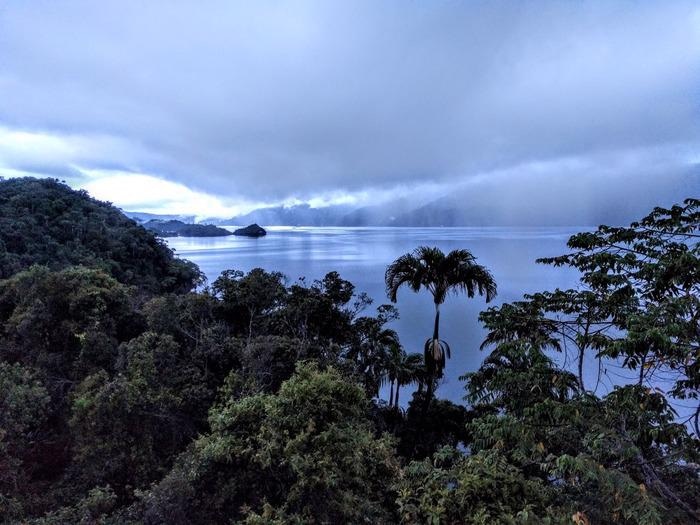Warning signs of ecosystem collapse at a wetland of international significance have been discovered in Papua New Guinea (PNG). This was found by a new study performed by scientists from The Australian National University (ANU).
 View over Lake Kutubu in Papua New Guinea. Image Credit: Professor Simon Haberle.
View over Lake Kutubu in Papua New Guinea. Image Credit: Professor Simon Haberle.
According to the internationally-recognized Ramsar Convention on Wetlands, ecological monitoring and the development of wetland management plans are required to preserve Lake Kutubu, PNG’s second-largest lake.
The lake has been acknowledged as one of the most pristine freshwater sites present in the Asia-Pacific region since being listed as a Ramsar site of international significance in 1998.
The scientists from the ANU School of Culture, History and Language (CHL), in collaboration with the University of Papua New Guinea and local landowners, examined sediment cores over several years from Lake Kutubu and discovered human impacts, such as mining, deforestation and increased human populations in the area. This has considerably transformed the lake during the last century.
The environmental changes and human impacts happening at Lake Kutubu have been investigated by Dr. Kelsie Long, who stated that the changes in the fungi, algal and geochemical compositions of the lake sediments offer early indicators of ecosystem fall.
Dr. Long felt that the potential for the unexpected collapse of ecosystems in response to interacting pressures has been a major concern in ecological and conservation research, as well as to the local communities that depend on the ecosystem.
The health of Lake Kutubu is changing. Villagers have been reporting the release of plumes of chemicals into the lake, fish kill events and subsequent health issues of people who rely on the lake for food and water.
Dr. Kelsie E. Long, School of Culture, History, and Language, College of Asia and the Pacific, Australian National University
“We can see these changes clearly in the chemical composition of sediments laid down at the bottom of the lake, before and after the start of resource extraction activities and increasing population growth in the region in the 1980s and 90s,” added Dr. Long.
Lake Kutubu is an area of hugely diverse rainforest flora and fauna measuring 19 km long, 4 km wide and up to 70 m deep. It has been inhabited by human populations equally diverse both linguistically and culturally.
The study determined significant shifts in algal composition and dung fungi in sediment from the 1980s. This indicates a drop in water quality that corresponds to the timing of raising livestock and habitations in the areas near Lake Kutubu.
The research team included CHL Director Professor Simon Haberle and Dr. Larissa Schneider. Both of them showed great interest in studying changes to the health of Lake Kutubu for many years.
According to Dr. Schneider, the research performed by the team demonstrates how industrialization and economic growth are responsible for excessively impacting the lives of traditional communities.
These communities don’t have a strong political voice, so independent studies like ours are important to support traditional communities to stand up to environmental injustice.
Dr. Larissa Schneider, School of Culture, History, and Language, College of Asia and the Pacific, Australian National University
The statistical analysis in the research paper was performed by Dr. Simon Connor, a palaeoecologist from CHL.
“We have to remember that Ramsar wetlands are not museum exhibits–they are the result of all the changes that went on in the past and are responding every moment to the changes happening now. Scientific studies like ours don’t tell local communities anything they don’t already know, but they can force governments and corporations to take action to prevent further damage,” Dr Connor noted.
Journal Reference:
Long, K. E., et al. (2021) Human impacts and Anthropocene environmental change at Lake Kutubu, a Ramsar wetland in Papua New Guinea. Proceedings of the National Academy of Sciences. doi.org/10.1073/pnas.2022216118.